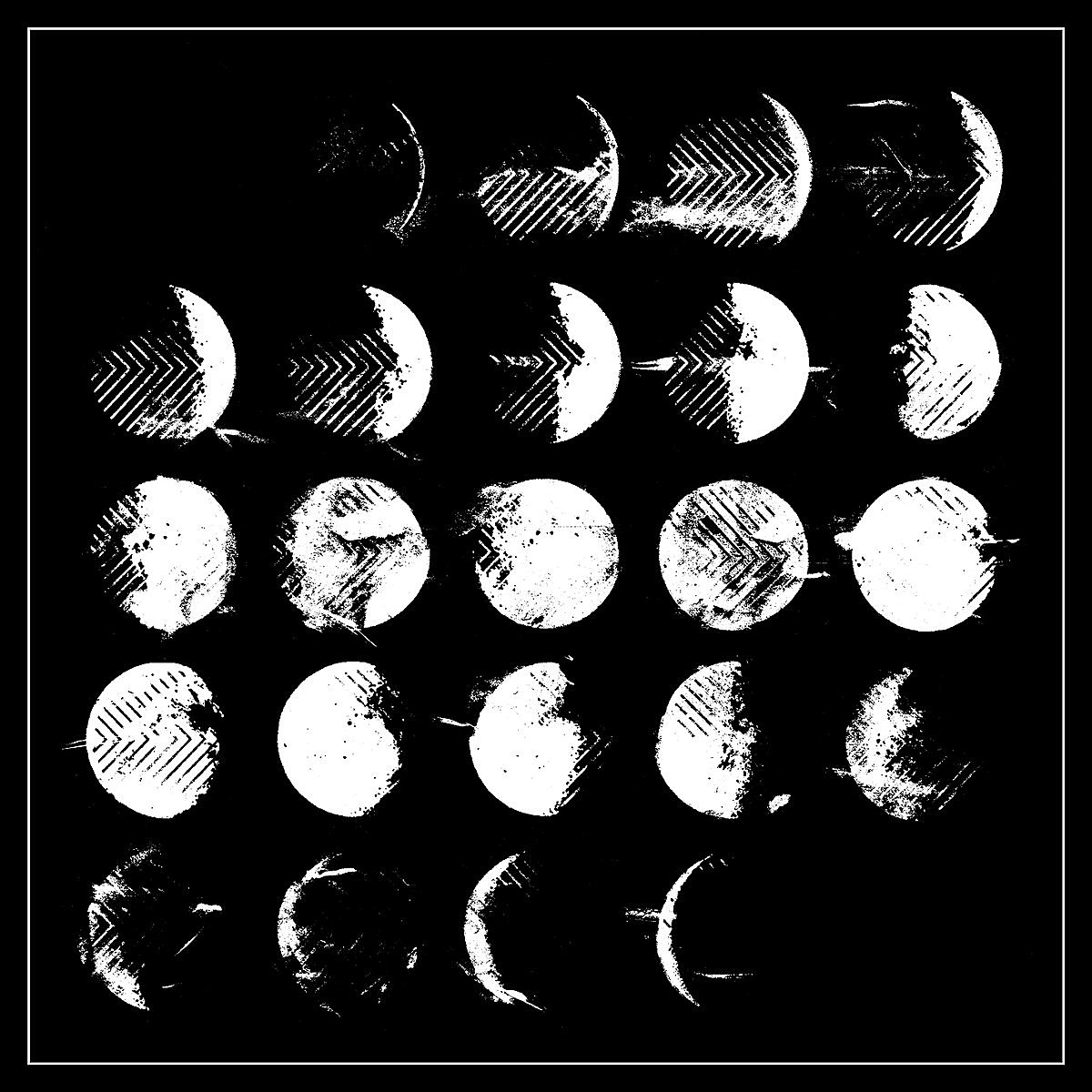
Failing To Fall: Converge 2002-2012
…
If you hadn’t noticed, Invisible Oranges has been buzzing with excitement about The Dusk In Us, the new record from metallic hardcore legends Converge. For most of our readers, even those who aren’t fans of the band’s music, our decision to pour so much digital ink into the subject should be self-evident. Converge are a long running, well respected band with a fanatical fanbase. They are a pivotal figure in the history of hardcore punk and heavy metal, and their first full length album in five years is an event worth celebrating.
However, since it’s been such a long time since the band graced us with new music it’s important to reaffirm why it’s worth discussing the band at length. After all, if you were 10 years old on the day that All We Love We Leave Behind was released, you’re now the perfect age to join the Converge cult, but you may not know where to start, or why you should care about the band.
Earlier this week, resident hardcore expert Bruce Hardt-Valenzuela covered the band’s early days leading up the release of their signature album Jane Doe, and yesterday our buddy at Brooklyn Vegan Andrew Sacher reviewed The Dusk In Us. Today we’re going to focus on the incredible run that the band went on in between those two records. Although Jane Doe remains the band’s singular achievement, the four records that followed it, You Fail me, No Heroes, Axe to Fall and All We Love We Leave Behind, cemented their legacy by building on and expanding the sound that made them icons.
As Bruce mentioned in his essay, Converge’s career is bisected by the release of Jane Doe and given its increased melodicism I wouldn’t be surprised if The Dusk In Us divided fans even further. That means that this is the perfect time to look back at the band’s ’00s material before they leap into a new era.
Here’s what made that decade of work special:
…
…
Lineup Consistency
Prior to Jane Doe, Converge’s lineup only had two permanent members; singer & designer Jacob Bannon and guitarist & producer Kurt Ballou. Shortly after the record’s release, guitarist Aaron Dalbec left to focus Bane and Converge’s four piece lineup with Ben Koller on drums and Nate Newton on bass hasn’t changed since.
If you look across metal history, a band’s lineup solidifying is a pretty good indicator that great things are about to happen. Iron Maiden ripped off Piece Of Mind through Seventh Son of a Seventh Son after Nicko McBrain joined. After the two Martin’s (Mendez and Lopez) joined Opeth they released Still Life, Blackwater Park and the Deliverance/Damnation combo back to back to back. Line up stability gives the group time to develop chemistry, to establish a style and then the mutual trust to expand on that style. Across the four albums that Converge released after Jane Doe the quartet became significantly better musicians, developing a three way vocal attack, picking up new techniques with each release, and learning to adjust their songwriting to fit each other’s’ skill sets.
Of course lineup consistency only matters if the members of that lineup are worth their salt, which brings us to…
…
…
Ben Fucking Koller
No offense to any of the previous drummers of Converge, but holy shit did they luck out by getting this guy. Koller, who also plays in Mutoid Man, All Pigs Must Die, and has filled in with Killer Be Killed, is one of the most singular talents in metal drumming. More impressive than his raw speed or power is his ability to catch accents and changes in rhythm out of thin air. Listen to how he throws in unexpected off beats into the lightspeed opening of “Concubine”, or the way he manipulates the pulse of “Dead Beat” by timing his fills juuuust right. Koller plays hardcore like a big band drummer, not only matching the rest of the band’s rhythmic figures, but anticipating and setting them up with blistering fills across the kit.
Koller played with this hands-heavy approach early in his tenure because he didn’t have much experience playing double bass, a blessing in disguise. Because he couldn’t match Ballou & Newton’s riffs with his feet, he added a layer of chaos by playing against them with the rest of his kit. By the time his feet caught up, most noticeably on No Heroes, it was like when LeBron James developed an outside shot. He was fully equipped to be the engine behind Converge’s unstoppable machine.
…
…
Focus on Song Structure
Just like a steady lineup is only as sturdy as its members, an engine is only as good as the vehicle it’s powering. In addition to becoming vastly better musicians over the ’00s, Converge also honed their songwriting. Compare the rambling structure of “The Saddest Day” to the tight verse-chorus form of “No Heroes”. Both songs are mosh-monsters, but the former achieves its length by throwing as many ideas as it can at the listener without any big picture consideration as to how those pieces work next to each other. The latter has fewer motifs, but reworks them each time the form repeats (listen to how Koller’s drum part changes in each verse leading up to the bonkers snare fills in the finale moments). Even their shorter, punchier tracks have gotten hook-oriented over time. “Tender Abuse” reworks its madcap opening rhythm to fit the song’s closing breakdown. “Reap What You Sow” takes riffs that on their own would be ludicrously indulgent, and organizes them into an easy to digest mold.
“In the past ten years or so we’ve really tried to create a musical song structure that will be in support of a memorable vocal structure,” Ballou said in an episode of Song Exploder that broke down the recording of “Dark Horse”. “We’re all fans of the pop song format, we find that most of our favorite metal songs have a hook, a memorable repeated chorus, a sensical verse.”
No matter how aggressive their music got, Converge have always found a way to make their howling agony accessible and downright fun to listen to.
…

…
God City
In that same Song Exploder interview, Ballou also described how his studio, God City, influenced the band’s writing. The studio is a midsized, well treated room, one that favors fast and precise playing over long drawn out tones. This is a fair point to make, although Converge have written more than their fair share of slower tracks, but it also speaks to another important change in Converge’s ’00s material. Starting with You Fail Me, Kurt Ballou took over as the sole producer of Converge’s material. Since then God City has become a ubiquitous destination for any band looking to turn their live sound into something superhuman. Ballou production credits have become so commonplace in heavy metal and hardcore that it’s easy to overlook how powerful this sound was when Converge first started tapping into it. With Ballou behind the boards, Converge were capable of grinding heaviness (“Plagues”) lo-fi acoustic balladry (“In Her Shadow”) and everything in between. Don’t let the hordes of imitators overshadow the power of Ballou’s work with his own band.
…

…
Jacob Bannon’s Graphic Design
Equally important to the band’s allure, if not necessarily their music, is Jacob Bannon’s work as the band’s graphic designer. Detractors could make the case that his work is predictable, (make a splotchy red background, add a woman looking forlorn, salt to taste) but the same qualities that make him easy for haters to poke fun at make him instantly recognizable to his fans. Moreover, Bannon has a keen eye for simple and easily replicable images. A face, a hand, a bird, a moon. The only record that doesn’t have its own unique avatar is Axe To Fall, whose blurring of multiple faces is a perfect fit for that record’s collaborative approach. Bannon’s images, in combination with his lyrics, evoke the world of Converge’s music. The two imbue each other with meaning. As a result the Jane Doe face has joined Joy Division’s Unknown Pleasures, The Misfits’s “Crimson Ghost” and Swans’ Filith as one of the most iconic merch designs in punk music.
Speaking of which, more than any of their contemporaries Converge understand the power of merchandising. By creating an immediately recognizable aesthetic and rotating designs in and out of stock, Converge have built a fan culture that follows their merch drops with frenzied anticipation. Their last two releases, The Dusk In Us and Jane Live were accompanied by a serialized collection of shirts that were designed to tempt completionists into spending sprees. I’m not trying to say that Converge are the Supreme of metallic hardcore, but I also can’t promise you I wouldn’t cop a Converge Brick if it dropped tomorrow.
…
…
Kings of the Fall
This final point might be a bit of a stretch, but stay with me. Since Jane Doe Converge have exclusively released their studio albums during the fall. Here are their release dates in order going from Jane Doe to The Dusk In Us: September 4th, September 21st, October 24th, October 20th, October 9th, November 3rd.
Obviously that doesn’t have much of an effect on the music contained on those records, but doesn’t it feel right that Converge have positioned themselves as the rulers of autumn? Isn’t it kind of perfect that Bannon’s roiling reds and oranges arrive on our doorstep just as the leaves have turned their colors? Converge’s ’00’s material has always had a dusky quality, depicting a world where the growing shadows hide wolves, rats, worms, and vultures that come to devour all that’s good and pure. Where lovers embrace in the last fading lights of the day. A world where our heroes fail us, and the shreds of hope that we cling to must be fought for tooth and nail. Autumn stands at the verge of death, as Jia Tolentino convincingly argued, it’s the Sunday of seasons. How perfect for Converge, a band for whom death is a constant encroaching threat, that their albums coincide with the year’s twilight. After five long years that have seen us descend even further into darkness than usual, Converge have delivered us another torch to keep the light burning.
…
…











